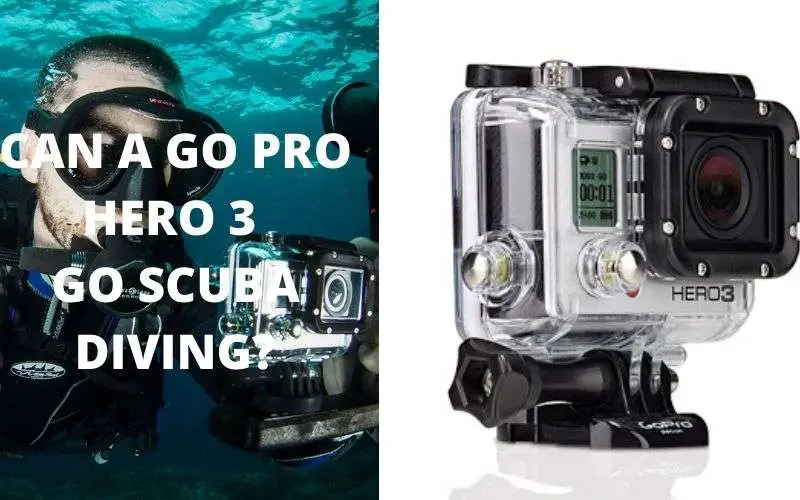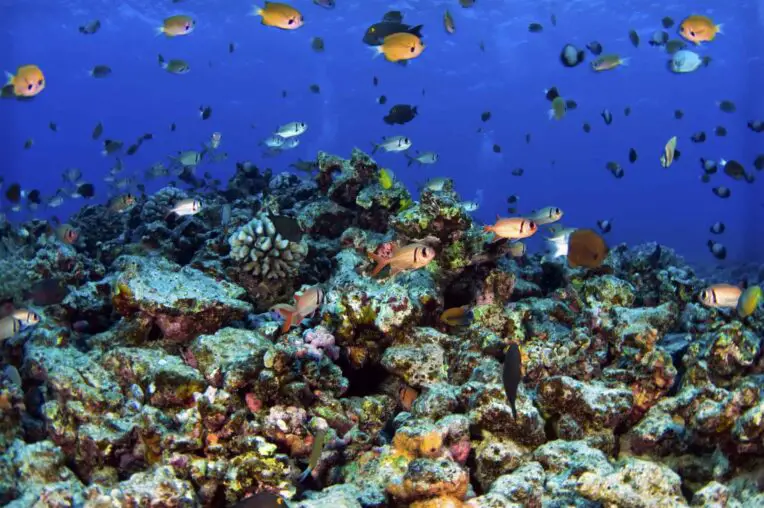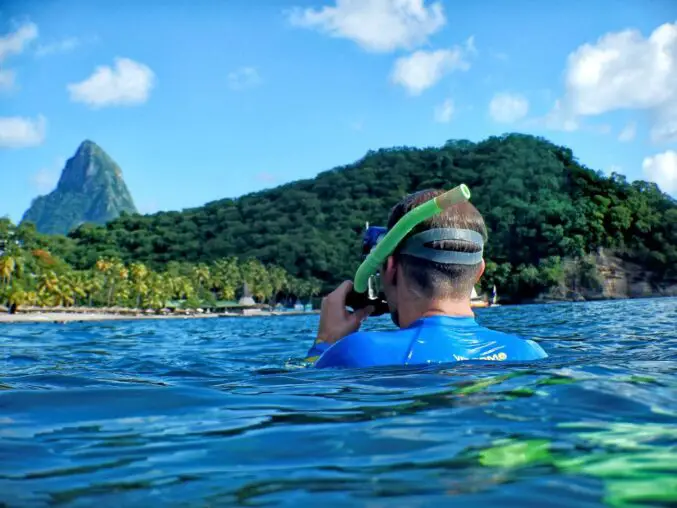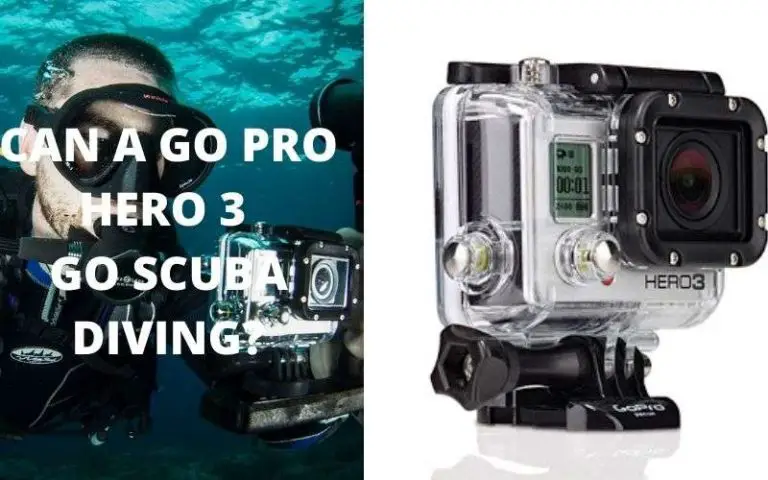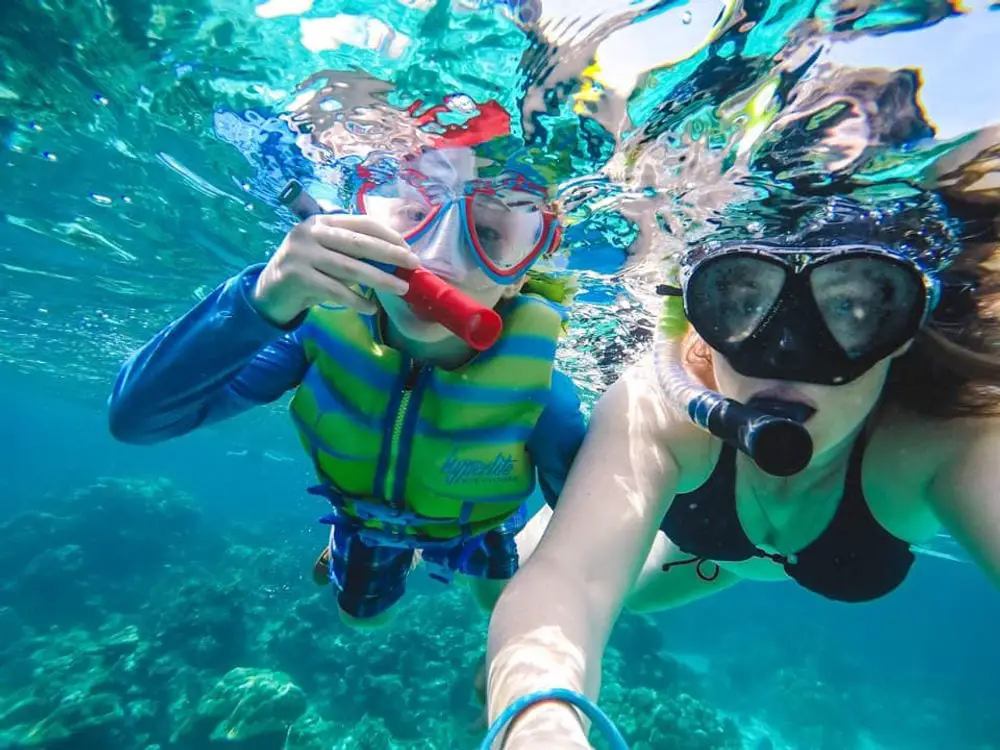
When it comes to selecting your snorkeling gear, one aspect often overlooked is the color of your equipment. While aesthetics play a role in our choices, the color of your gear can have practical implications, affecting your visibility to fellow snorkelers, boats, and instructors.
In this comprehensive guide, we’ll explore the best and worst colors to wear while snorkeling, helping you make informed decisions for a safe and enjoyable experience.
Choosing the Right Colors for Snorkeling
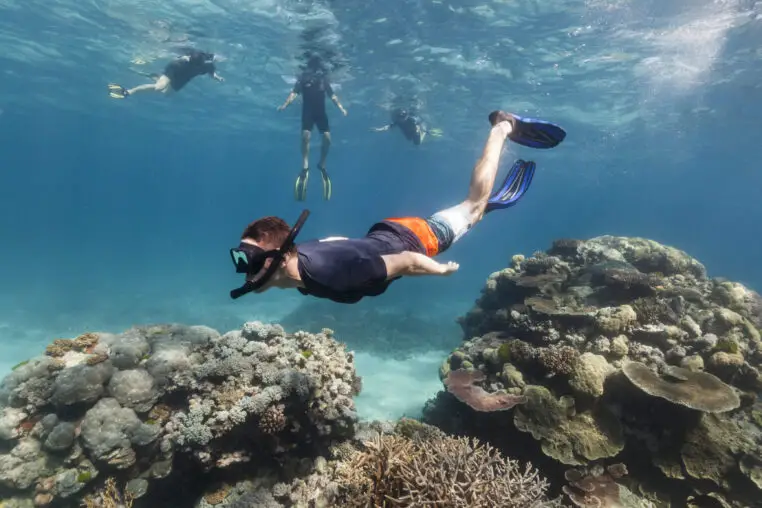
The colors you choose for your snorkeling gear can significantly impact your safety and overall experience. Bright colors are generally recommended, as they enhance visibility, making it easier for snorkeling buddies, boats, and instructors to spot you.
Beginners, in particular, should stick to vibrant hues to ensure they are easily recognizable in case of separation or emergencies. Moreover, this reduces the risk of boat collisions, a crucial consideration for safe snorkeling.
However, it’s important to note that wearing bright colors might attract the attention of marine life, including sharks. While shark attacks are exceedingly rare, it’s advisable to stick with bright colors for added safety.
In this article, we’ll delve into the common colors found in snorkeling gear, the reasons behind these choices, and the practical implications of color selection.
Exploring Common Snorkeling Gear Colors
Most snorkeling gear is designed with safety in mind, often featuring bright colors that enhance visibility. Buoyancy aids, for instance, frequently come in neon yellow or vibrant orange, ensuring snorkelers are easily spotted on the water’s surface.
If you opt for a snorkeling wetsuit to combat cooler water temperatures, you’ll notice that they predominantly come in darker shades like black. While dark colors may not stand out as well, especially in low-light conditions, you can offset this by wearing brightly colored equipment over your wetsuit, such as a snorkel vest or a vibrant bandana.
In warmer climates, you might consider skipping the wetsuit in favor of rashguards. Rashguards offer various color options compared to wetsuits, allowing you to choose a hue that suits your preferences.
Not only do rashguards provide excellent UV protection, but they also reduce the need for copious amounts of sunscreen. Additionally, they offer an added layer of defense against minor scrapes and injuries, enhancing your comfort during snorkeling excursions.
The Science of Colors in Snorkeling
To understand the significance of color choices, it’s crucial to grasp how colors are perceived underwater. Underwater, colors can appear different due to the way water absorbs and scatters light. As you descend into deeper waters, the loss of color becomes more pronounced.
For snorkelers, who predominantly operate near the water’s surface, the impact of color loss is minimal. Even when performing shallow dives or duck dives, the effect on color perception remains negligible. However, water visibility plays a crucial role in how colors are perceived.
If you’ve ever observed fish or corals at a distance while snorkeling, you might have noticed that they appear darker than expected. This phenomenon occurs because, at their depth, the sunlight reflects off them after some of the brighter colors have been absorbed.
To witness marine life in their true colors as they appear near the surface, you would need to approach them closely and use a dive torch. This close proximity prevents the loss of light, providing a more accurate representation of their colors.
Can Marine Life Notice Colors?
Marine life, including fish, has varying abilities to perceive colors and contrasts. Some species, notably sharks, can distinguish colors. For snorkelers, whether fish notice your gear’s bright colors is generally less of a concern.
Fish are often alerted to a snorkeler’s presence by the splashing noises created during snorkeling. Therefore, getting a good look at fish is entirely possible, even when wearing bright colors. Remember to respect marine life by refraining from touching or disturbing them.
Reef fish, in particular, display a wide array of vibrant colors and patterns. Scientists propose two theories to explain this phenomenon. Firstly, some believe that bright colors in fish help them camouflage in colorful reef environments, while others suggest that distinctive patterns facilitate recognition among members of the same species, aiding in mate selection.
For snorkelers, this diversity of colors and patterns contributes to the visual spectacle of underwater encounters, enhancing the overall experience.
Sharks and Bright Colors
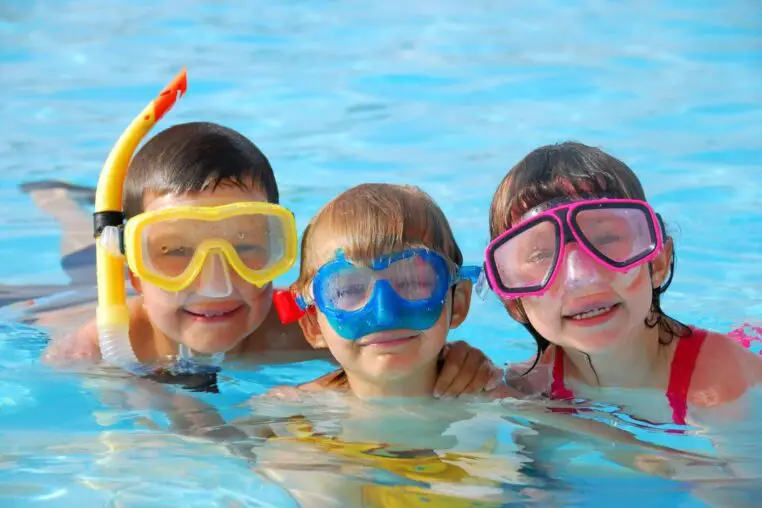
Sharks possess keen contrast perception, making them likely to notice snorkelers wearing bright colors. Some snorkel vests are designed in eye-catching yellow, humorously dubbed “yum-yum yellow” by shark researchers. However, it’s essential to keep shark attacks in perspective.
The occurrence of shark attacks worldwide is exceedingly rare, making the likelihood of encountering a shark while snorkeling minuscule. Depending on your perspective, the idea of attracting sharks could even be seen as an exciting opportunity for a close encounter, rather than a cause for panic.
In most cases, the benefits of wearing bright colors far outweigh the potential risks. Ensuring that you remain highly visible is essential, especially if you’re part of a group. The risk of separation is real and poses a more significant threat than rare shark encounters.
Moreover, a more substantial concern regarding marine life is the reflection of bright light from objects like dive watches or jewelry. This reflection can attract predatory fish, as they mistake it for the glint of scales. While sharks typically do not prey on humans, they may investigate shiny objects at the water’s surface, so it’s best to minimize reflective items while snorkeling.
Conclusion
The color of your snorkeling gear plays a crucial role in ensuring your safety and enhancing your overall experience. While manufacturers often choose bright colors for their products, it’s essential to appreciate the practical benefits of these hues.
Bright colors improve your visibility to fellow snorkelers, boats, and instructors, reducing the risk of accidents and separation. For instructors and experienced snorkelers, wearing bright colors can help you stand out and assist those around you.
Ultimately, the choice of bright colors is advisable for all snorkelers, whether beginners or seasoned enthusiasts. Concerns about attracting marine life due to your gear’s color are generally unwarranted, as the noise you create while snorkeling is more likely to influence marine behavior than your appearance.
When considering your snorkeling gear, prioritize visibility and safety by opting for bright colors. With this practical choice, you can enjoy your underwater adventures with confidence and peace of mind.




